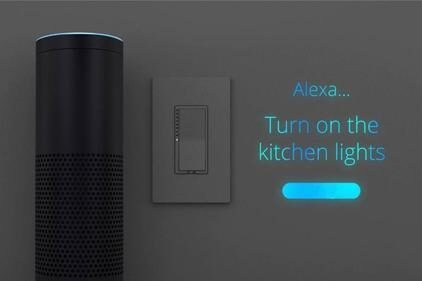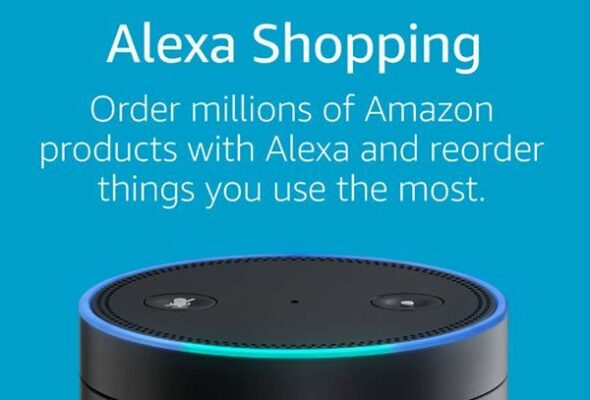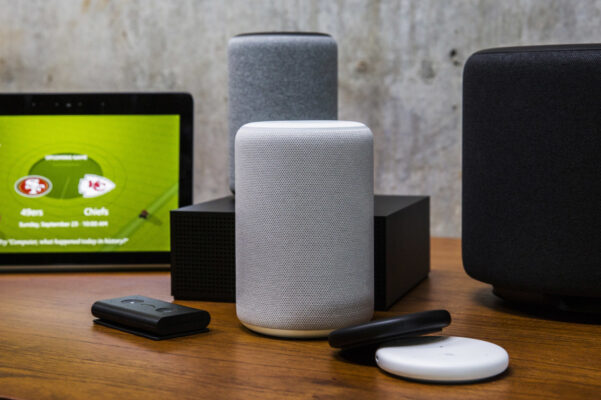Amazon’s Alexa-controlled Echo speaker now in its second generation and with several derivative versions available, continues to expand its music, smart-home, and digital-assistant abilities.
It’s a wireless speaker first, but capable of much more. Useful for the more tech savy older generation but will be increasingly useful for future generations of older people.
Using nothing but the sound of your voice, you can play music, search the Web, create to-do and shopping lists, shop online, get instant weather reports, and control popular smart-home products—all while your smartphone stays in your pocket.
Echo, always listening via Amazon’s Alexa voice service, lets you play music, order pizza, and get answers to questions, and can control popular smart-home devices and 1,000-plus other things.
Alexa (named after the ancient library of Alexandria) is Amazon’s voice-control system.
It lets you speak your wishes to an Echo smart speaker and see them fulfilled—at least simple ones, like dimming your lights or playing music tracks.
What sets Alexa and Echo speakers apart from first-generation voice assistants is their responsiveness. There’s no activation button to press. Simply say the trigger word (either “Alexa,” “Echo,” “Amazon,” or “Computer”) followed by what you want to happen, and it will usually be done—as long as you’ve set up everything properly and are using the correct command.
Once you get used to the quirks, using Alexa feels much more natural and responsive than speaking to a phone-based voice assistant like Apple’s Siri. As a result, you’ll likely find yourself using your phone less frequently when you’re at home.

Beyond asking for music, you can use Alexa to search Wikipedia (“Alexa, who was Guy Fawkes?”), make quick cooking conversions (“Alexa, how many pints are in a gallon?), help with math homework (“Alexa, what’s 9 times 48?”), or create a to-do list (“Alexa, add ‘make doctor’s appointment’ to my to-do list.”). A growing list of built-in capabilities and third-party skills means that your Alexa device keeps improving the longer you own it.
Echo devices stream your voice to the cloud only when you ask Alexa to do something (your requests also show up in the app, and you can delete them if you don’t want to leave a record). The default wake word is “Alexa,” but you can change that to “Echo,” “Amazon,” or “Computer.”
Once you say the magic word, the microphone takes everything you say next and beams it up to Amazon’s cloud computers for quick analysis. If it’s a question it can answer, such as, “Alexa, what’s the weather in Chicago today?” an answer comes forth from the speaker in a female, slightly computer like voice.
If it’s music you want, Alexa will search through the Amazon Music catalogue or Amazon Prime Music for the artist or genre you requested. (An Amazon Prime account is required for access to Prime Music.)
It can also play TuneIn Internet radio stations, music from Pandora (free or subscriber accounts), Spotify (only subscriber accounts), Apple Music, and iHeartRadio (subscription required). If it’s a request for a joke, be prepared to groan. If it’s a request to turn off a light or adjust the thermostat, your light will turn off and your temperature will adjust—but only if you’ve asked correctly and have properly integrated that ability into the system.
It’s those smart-home talents that have many people excited about Echo speakers. One of the key characteristics of a smart device is that it should make common daily tasks easier. Turning off your lights or adjusting your thermostat with an app on your iPhone is clever but it is simply moving the switch from your wall to your phone. Completing the same task by speaking your command while your phone sits dormant in your pocket is even easier. Echo speakers and Alexa are for smart-home users who think even launching an app is too tedious.

The easiest integrations are with the devices Alexa can work with directly, and those can be found in the smart-home section of the app’s menu. Partner systems include Philips Hue lights, the Lutron Caséta lighting system, Belkin Wemo switches, Nest thermostats (second- and third-generation models), Ecobee thermostats, the Sensi thermostat, the TP-Link Kasa outlet switch, and LIFX smart bulbs, plus Insteon, Wink, and SmartThings hubs. Integrating one of the hubs essentially makes your Echo able to control most things connected to those hubs, and thereby makes the list of things it can control significantly larger.
Initially, you were limited to one action per voice command, but now you can string activities to be activated by a single command using either grouping or routines. For example, you can group smart lights together by room or area, and then turn off that area with one command (“Turn off the kitchen”). Routines are custom-named activities you can program that can combine smart devices (such as lights) with other tasks like playing your morning news briefing. For instance, you could create a routine called “good morning” that when triggered would turn on your bedroom and kitchen lights and play the news in the bathroom. Routines can also be scheduled to activate automatically at a certain time, so your good morning routine could turn on the lights for you every day at 6 a.m. without your having to do anything else. Unfortunately, music tracks or playlists are not currently supported by routines.
You can also use the entire family of Amazon Echo speakers as a home intercom system. If you have multiple Echo devices throughout your home, you can initiate walkie-talkie style chats between them with a voice command.
You would have to set this up first, by giving each of your devices names and the enabling the “drop-in” feature. You can also ask your Echo to make free phone calls to any phone simply by saying, “Alexa, call xxx-xxx-xxxx.” If you have one of the video-enabled Echo models (the Show or Spot), you can make video calls at no additional charge.
If you’re an Android device owner since 2018, you can also use Alexa to text (as long as it’s not a group text).

Another smart feature of Echo speakers and Alexa, and one that’s close to Amazon’s heart, is voice-controlled shopping. Voice shopping is available only to Prime members, and only Prime-eligible products can be purchased this way. There are some restrictions beyond that, too. For instance, you can’t order clothing, shoes, watches, or jewelry by voice. To buy something, you ask Alexa to order your item. It will search for it and tell you the price and ask you to confirm with a four-digit security code (that you would have already configured in the app) that prevents children and strangers from making unauthorized purchases. The purchase is charged to your default payment method. Often Amazon offers special deals exclusive to voice purchasers. You can learn about those by asking “Alexa, what are today’s deals?”
Extract from thewirecutter.com article by Grant Clauser

